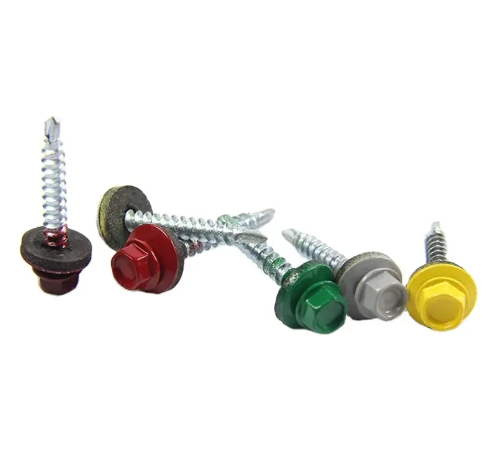m3 self tapping screw hole size
Understanding M3 Self-Tapping Screw Hole Size A Comprehensive Guide
When it comes to mechanical fasteners, self-tapping screws are a popular choice due to their ease of use and versatile applicability. Among these, M3 self-tapping screws are particularly favored in various industries, from electronics to automotive assembly. An essential aspect of successfully utilizing M3 self-tapping screws lies in understanding the appropriate hole size for optimal performance.
What Are M3 Self-Tapping Screws?
M3 screws are designed to fit into a hole measuring 3mm in diameter. Self-tapping screws feature a pointed tip that allows them to create their own mating threads as they are driven into materials. This unique design eliminates the need for pre-drilled holes in many applications, although the correct hole size can enhance the speed and efficiency of installation while ensuring a secure hold.
Importance of the Correct Hole Size
Using the proper hole size is crucial for achieving the desired torque and grip when utilizing M3 self-tapping screws. An inadequately sized hole can cause several issues
1. Insufficient Hold If the hole is too large, the screw may not grip the material adequately, leading to loosening and potential failure.
2. Material Damage A hole that is too small can cause the material to split or crack during installation as the screw tries to create its own thread.
3. Increased Wear Over-tightening in an improperly sized hole can lead to accelerated wear on both the screw and the host material, eventually compromising the integrity of the assembly.
Recommended Hole Sizes for M3 Self-Tapping Screws
m3 self tapping screw hole size

Typically, for M3 self-tapping screws, the hole size recommendations vary slightly based on the material being used
- Soft Materials (like plastics and soft woods) A hole diameter of around 2.5mm to 2.8mm is often recommended to ensure that the screw can tap its own threads properly while still providing a solid grip. - Harder Materials (like metals) For metal components, a hole diameter closer to 2.5mm is usually advisable, as this allows the screw to create threads without being overly aggressive, which could damage the material.
Installation Tips
To ensure the effective use of M3 self-tapping screws, consider the following installation tips
1. Drilling the Hole If pre-drilling is necessary, use a high-quality drill bit appropriate for the material. For metals, utilize a titanium or cobalt bit for better durability.
2. Alignment Ensure that the screw is aligned correctly during installation. Misalignment can cause issues with threading and lead to material damage.
3. Controlled Torque Use a torque wrench or variable-speed screwdriver to achieve the correct torque. Over-tightening can strip the threads created in the material.
4. Test Sample Holes If possible, create several test holes in scrap material to determine the most suitable diameter for your application.
Conclusion
M3 self-tapping screws offer a convenient and efficient fastening solution across a wide range of applications. Understanding the appropriate hole size is essential in maximizing their performance and maintaining the integrity of the materials being joined. By following recommended practices and employing careful installation techniques, you can ensure a strong, reliable bond in your projects. Whether you are a DIY enthusiast or a professional engineer, mastering the use of M3 self-tapping screws will enhance your assembly capabilities and contribute to the success of your work.
-
Top Choices for Plasterboard FixingNewsDec.26,2024
-
The Versatility of Specialty WashersNewsDec.26,2024
-
Secure Your ProjectsNewsDec.26,2024
-
Essential Screws for Chipboard Flooring ProjectsNewsDec.26,2024
-
Choosing the Right Drywall ScrewsNewsDec.26,2024
-
Black Phosphate Screws for Superior PerformanceNewsDec.26,2024
-
The Versatile Choice of Nylon Flat Washers for Your NeedsNewsDec.18,2024










